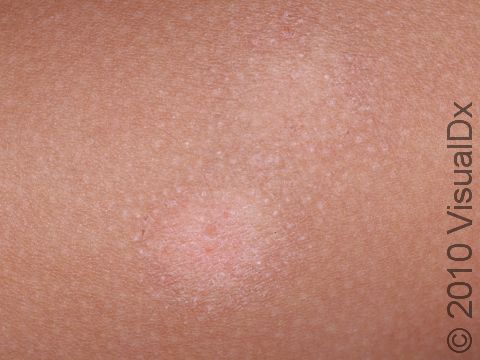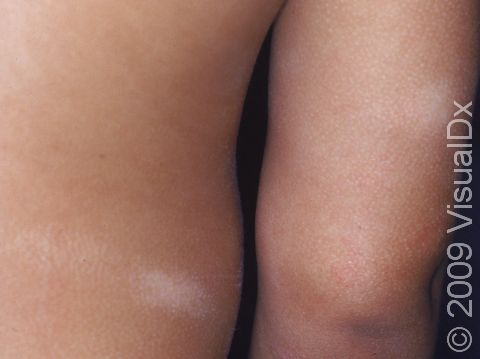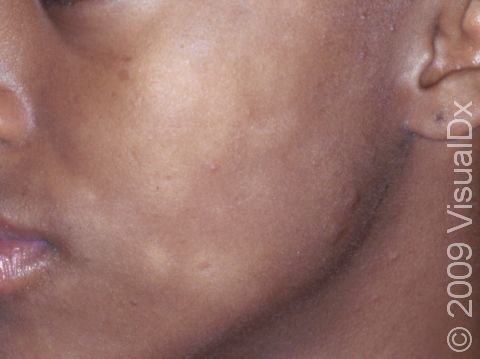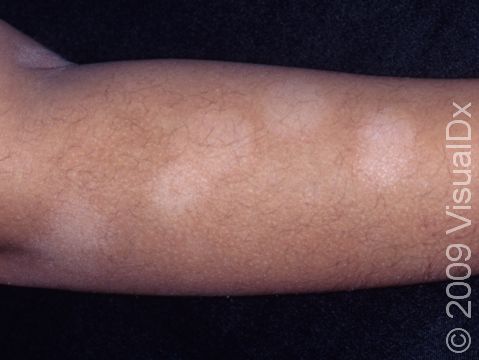Pityriasis Alba
Pityriasis alba is a common skin condition that mostly affects children. It looks like scaly or flaky patches that are lighter than the surrounding skin, and the affected areas usually occur on the face or cheeks. Pityriasis alba can be bothersome because of its appearance, but the condition is not a serious one. The cause of pityriasis alba is not well known, but it does seem to be more common in children and teens who also have allergies or asthma, so the things that trigger these other conditions may also trigger pityriasis alba. Most people also notice that the condition is more severe in the summertime; this may be because it is more noticeable in the summer as the surrounding skin becomes tan. There is no certain treatment for pityriasis; it usually goes away on its own within a year. Pityriasis alba is not contagious.
Who's At Risk?
Pityriasis alba occurs in teens of all races and of both sexes, though it is more obvious in darker-skinned individuals. In general, the condition is most common in children and teens aged 3–16.
Signs & Symptoms
The most common locations for pityriasis alba include:
- Cheeks, around the mouth, chin
- Forehead
- Neck
- Shoulders, upper chest, and upper arms
Pityriasis alba appears as several (2–20) light-colored (hypopigmented) patches ranging in size from 1–4 cm. The patches may have slight and subtle surface patches (scale). Occasionally, pityriasis alba begins as mildly itchy, pink patches that develop into lightened patches.
People often think that pityriasis alba gets worse in the summer, but it just becomes more obvious as the normal surrounding skin becomes darker with sun exposure.
Self-Care Guidelines
If you suspect that you have pityriasis alba, the most important self-care measure is to keep the skin well moisturized. Try the following:
- Use non-soap cleansers or moisturizing soaps.
- Apply moisturizers such as petroleum jelly (Vaseline®) or fragrance-free ointments and creams.
- Avoid sun exposure and wear sunscreen.
- Apply over-the-counter hydrocortisone cream sparingly for 3–7 days.
Treatments
To make sure that there is no yeast or fungus present, your physician may wish to scrape some of the scales onto a slide and examine them under a microscope. This procedure, called a KOH (potassium hydroxide) preparation, allows the doctor to look for tell-tale signs of yeast infection. Pityriasis alba is not caused by an infection with yeast or fungus. Therefore, the KOH preparation should be negative.
Since pityriasis alba is benign and does not usually spread or last long, no treatment may be necessary. The physician will recommend many of the self-care measures listed above. In very severe, widespread infections with pityriasis alba, the doctor may recommend:
- Prescription-strength corticosteroid (cortisone) cream
- Ultraviolet light therapy
Visit Urgency
Call your doctor for evaluation if the condition does not improve with self-care measures, if it seems to be getting worse, or if it spreads to other areas.
References
Bolognia, Jean L., ed. Dermatology, pp.223-224, 965. New York: Mosby, 2003.
Freedberg, Irwin M., ed. Fitzpatrick’s Dermatology in General Medicine. 6th ed. pp.837-838, 858. New York: McGraw-Hill, 2003.
Last modified on October 5th, 2022 at 7:48 pm

Not sure what to look for?
Try our new Rash and Skin Condition Finder



